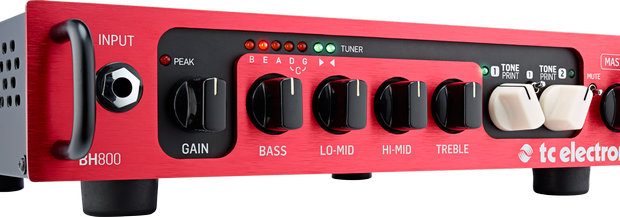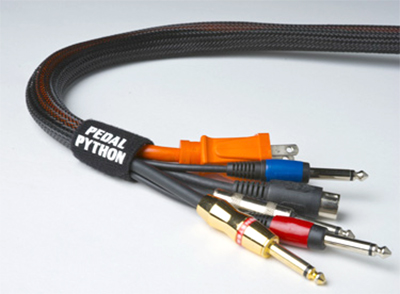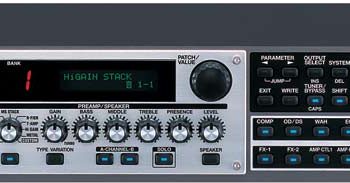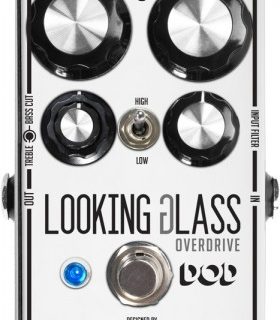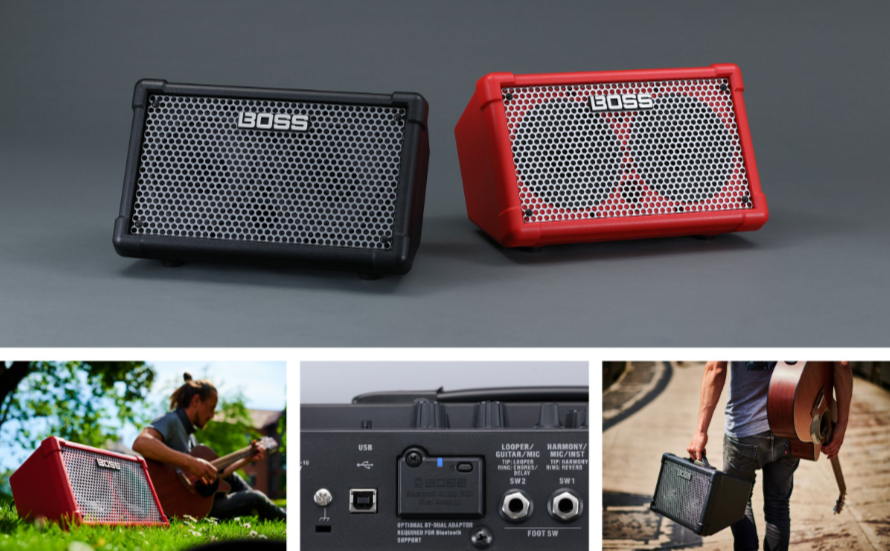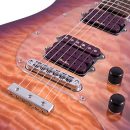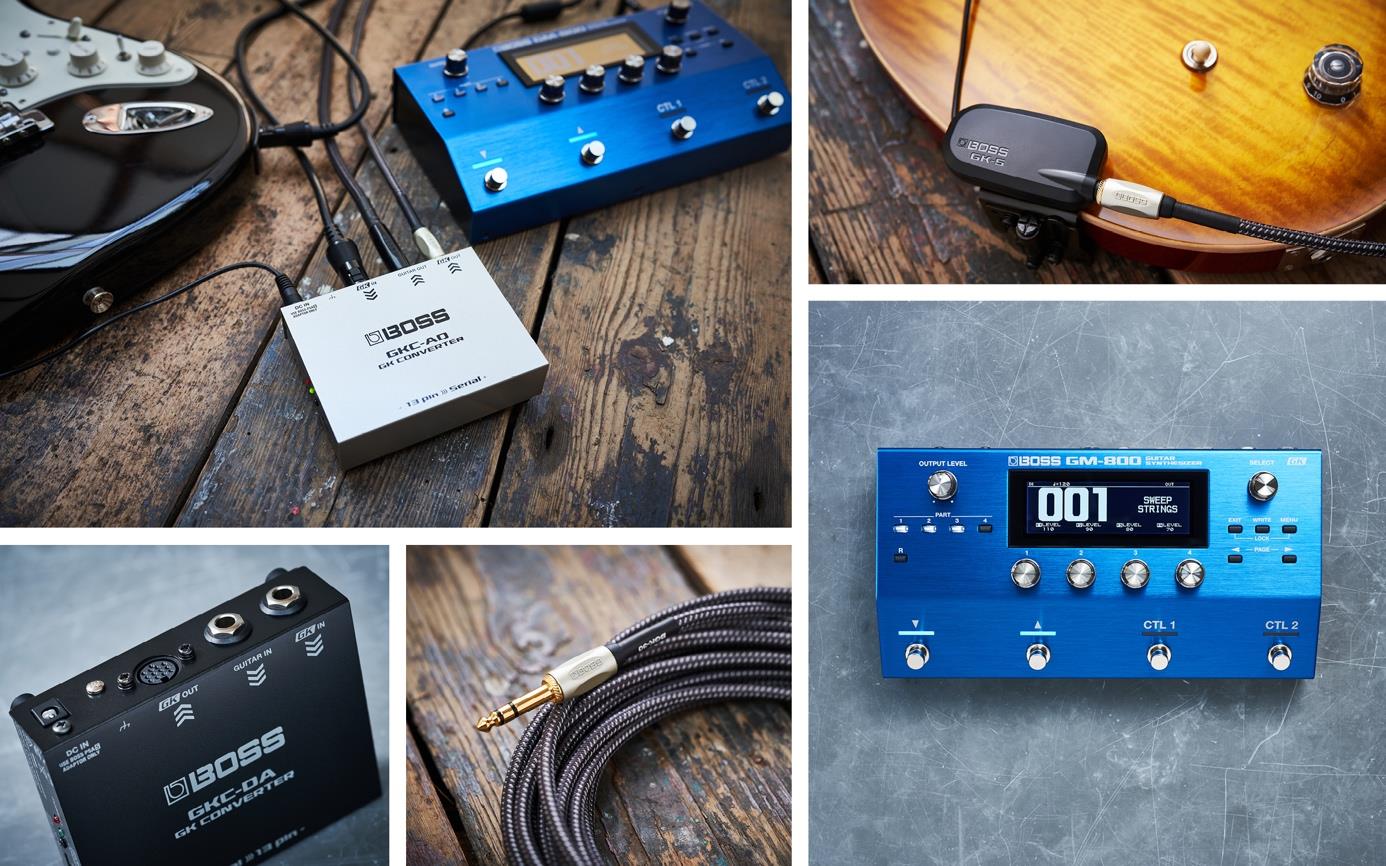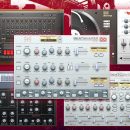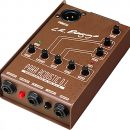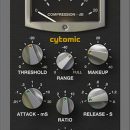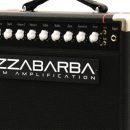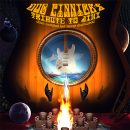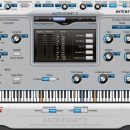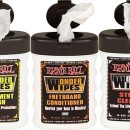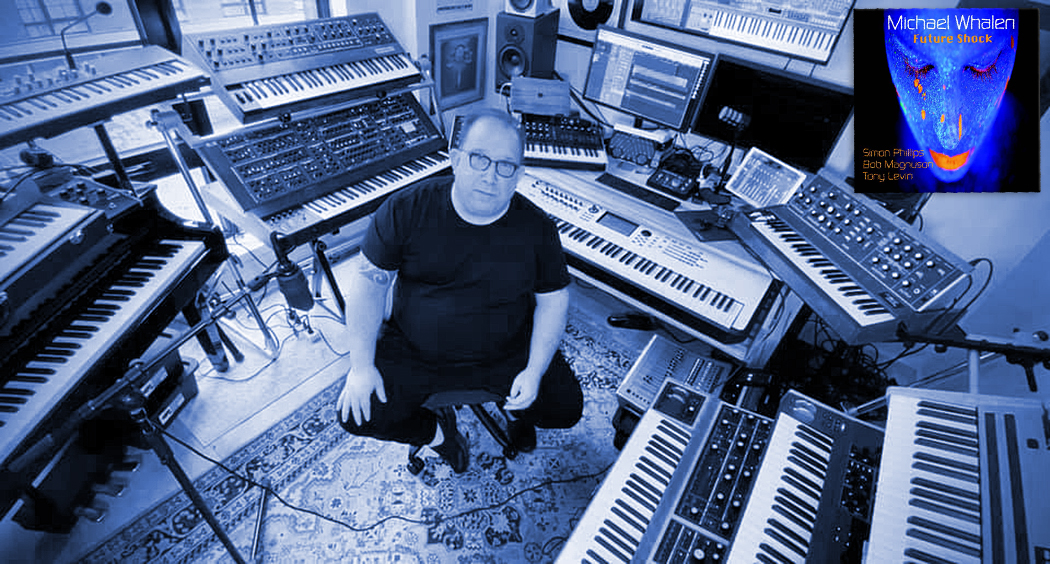
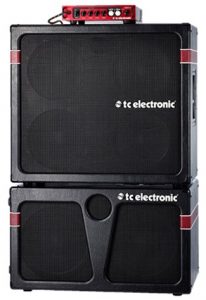 There is something to be said about classic bass amplifier design. Those tried and true, familiar designs played over the years have influenced the way we as musicians expect to hear the bass guitar. Many amps are known for their signature nuances and coloration, the result of their unique designs. Whether it be a tube or sold state circuit, paper cone speakers or aluminum cone speakers, ceramic, neodymium or even kryptonite magnets, the focus of all of these designs has been to process and deliver a great sounding bass guitar. But sometimes, you need to explore new boundaries, as bass amplification has evolved a bit from those classic designs. Whether you are a vintage purist or a gear junkie in search of the latest and greatest technology, you owe it to yourself to see what is happening in the bass world at TC Electronic, because it’s actually quite awesome.
There is something to be said about classic bass amplifier design. Those tried and true, familiar designs played over the years have influenced the way we as musicians expect to hear the bass guitar. Many amps are known for their signature nuances and coloration, the result of their unique designs. Whether it be a tube or sold state circuit, paper cone speakers or aluminum cone speakers, ceramic, neodymium or even kryptonite magnets, the focus of all of these designs has been to process and deliver a great sounding bass guitar. But sometimes, you need to explore new boundaries, as bass amplification has evolved a bit from those classic designs. Whether you are a vintage purist or a gear junkie in search of the latest and greatest technology, you owe it to yourself to see what is happening in the bass world at TC Electronic, because it’s actually quite awesome.
TC Electronic launched their bass amplification line in 2009, and we were blown away by the sound quality, design, and feature set. In fact, the original RH450 head and RS-series cabinets are still sold today, and we know many pros using them as their primary bass rigs. But with a digital power block and TC Electronic signal processing on board, we didn’t feel the need to review every subsequent model as the tone was going to be far more similar than analog amplifiers with new circuit designs.
The new BH800 is a different animal, though, and it warranted a fresh look. While the RH450 is a modern amp for a modern player (and thus may have seemed too techie in operation for some purists), the BH800 retains the fantastic tone of the line but delivers it via a classic, streamlined interface.
All is not vintage, however, as the BH800 incorporates TC Electronic TonePrint technology, which makes it a breeze to load a pair of custom effects directly into the amp—even if you’re the kind of player who tends to avoid anything perceived as being too complex.
Along with the more classically inspired design comes a gorgeous new line of speaker cabinets. The new K-Cab line follows a similar format as the RS cabinets, but wrapped in awesome 60s style. Great features, great tone, and extremely reasonable pricing make both the amp and the new cabinets a great deal.
Bottom line: we’re buying this rig, and we did not expect to feel that way.
Features
 |
BH800 Bass Head
The new BH800 head retains the familiar TC Electronic compact head form factor, and at under seven pounds, it’s hard to believe there is a high power, fully-featured bass amp lurking inside.
The BH800 outputs out a whopping 800W of power, has a built in tuner capable of tuning up to six strings in B-E-A-D-G and C, and has a very straightforward, analog user interface for operation.
From left to right, past the input jack, the BH800 starts with a gain control that includes a red LED peak light, which signals the maximum level the gain can be turned to without overdriving the input stage (in a way that would prove harmful to the amp, and musically unpleasant).
The four main bands of equalization on this rig are the Bass, Lo-mid, Hi-mid, and Treble, and each band has been specifically tweaked for optimal bass tone manipulation. The “Intelligent EQ” technology manipulates multiple frequency bands on each knob, so these adjustments will add significant variety to the sound of the amp.
Down the line of knobs are two signature TonePrint knobs. Users of TC Electronic pedals are no stranger to Tone Prints: the TonePrint app on your smartphone or computer enables you to select from a wide range of customized effects — and then easily transfer the effects into your pedals (wirelessly). Here, TC Electronic has extended the capability of transmitting specific bass designed presets directly into the amplifier.
Other amps in the product family have some built-in effects like compression and distortion, and those are the default effects preloaded, but the TonePrint feature lets you replace them with anything you may desire—chorus, flanger, delay, etc. Switches on the front of the amp let you manually engage/disengage the individual effects, and each has its own adjustment to control a preset parameter.
These options are also accessible by means of an optional three-switch foot pedal, which also has a button that mutes the amp for silent tuning and instrument swaps.
 |
On the rear panel, a single Speakon connector connects to the first of up to two cabinets (minimum of 4 Ohms load). A rear-panel USB port is used to connect the amp to your computer to update the firmware, or to transfer TonePrints when it’s not convenient to use the smartphone app.
There is a ¼” auxiliary input for connecting an external device like your smartphone or MP3 player to play alongside a track or keep time, as well as a headphone jack that automatically bypasses the speaker output, so you don’t have to disconnect anything for late night silent jamming.
Finally, the BH800 has a built-in DI for recording and direct-to-house sound reinforcement. A pre/post EQ switch lets you choose between a completely dry, unprocessed output (useful for recording) or the full-range signal including EQ and any TonePrint effects that you have engaged. Happily, no speaker cabinet is required to be connected, so for direct gigs with in-ear monitoring, all you need to bring along is your head, which will fit nicely in your backpack.
Under the hood, the amp also features a protection mode that goes into effect when the amp is used with improper conditions such as extreme heat, poor ventilation, or in the event of a short circuit. This preserves the lifespan of the amp as well as provides safety to the user.
K-210 and K-212 Speaker Cabinets
The new TC Electronic K-Cabs are as functional as they are aesthetically beautiful. Each has an 8-ohm impedance and 400W handling power, and two Speakon connectors make it easy to create a two-cabinet stack. The cabinets feature two 10” or 12” drivers respectively, and a 1” ceramic tweeter in each, and while they share most of the same dimensions, the K-212 cabinet is deeper, as the cabinets are specifically tuned and voiced for the different drivers.
The TC Electronic cabinets have a slim figure which makes them ideal for vertical stacking in a tight spot, but they also include a second set of rubber feet on their sides to give you the option of horizontal stacking—a nice touch!
The plywood construction of these cabinets is solid, the leatherette covering is both protective and sharp looking, and a cloth grill protects the drivers. A pair of recessed, metal handles provide for easy transport. The cabinets are under 50 pounds apiece, so moving them around isn’t much of a challenge.
Controls are straightforward: the rear of the cabinets have two Speakon jacks (one for input and one 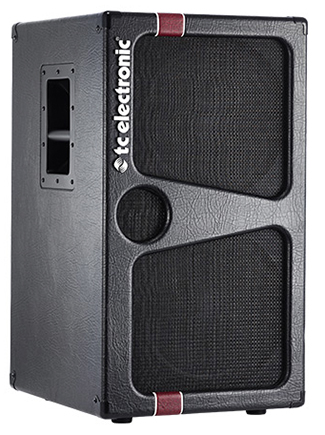 to pass through to another cabinet).
to pass through to another cabinet).
Usability
The fundamental aspects of this entire system as a whole are as simple and as user friendly as can be. While the combination of the BH800, K-210 and K-212 is great, by examining each component on its own as well, we were able to debunk the old adage “the whole is greater than the sums of its parts.”
BH800 Bass Head
Starting with the BH800 head, one of the biggest demands of today’s working bass player is portability. As light-weight class D (digital) power supplies have been perfected over the years, the BH800 weighs in at 6.6lbs and although it is not quite bass gig bag pocket size, at 11” x 9.5” x 2.2” it is small enough to put in a laptop bag. (Although there is no specific carrying case for the BH800, the manufacturer informed me that the cases that hey have for their RH series amplifiers will fit.) The construction is nice and solid with an anodized aluminum front plate and metal chassis.
The front panel is as intuitive as can be. The control labels are visible and easy to see, and all of the easily accessible pointer style knobs are precisely recessed into the panel. One of our favorite—and probably most important—aspects of this amplifier is the EQ stage. TC Electronic has designed what, on the surface seems like a very basic, four-control EQ section with familiar labels. Although we will discuss the sound qualities in the next section, what makes the EQ so useable and musical is the atypical design on the inside. A typical EQ circuit found on many amplifiers has a few fixed frequencies and a midrange with some sweepable frequencies. TC Electronic has designed this EQ section to sculpt the sound by boosting and/or cutting multiple frequencies at the same time with a single adjustment. The characteristics of this unique EQ stage made it very easy to dial in a great tone in various system configurations and situations.
Right above the EQ is a convenient built-in tuner that can handle from the low B to high C of a six-string bass. There is a separate LED for the B, E, A, D and G string. One thing to note is when you are tuning the high C, the D and G LEDs are designed to light up at the same time to signify the high C. The tuner (which is always active) was very simple to use and very stable. There is a Mute toggle switch right next to the Master volume knob that allows you to mute the output while tuning if you don’t have the optional footswitch. This tuner is designed to recognize only natural notes, though, so we were unable to use it with drop tunings like Eb.
The rear panel of the BH800 was feature packed, and we loved not having to worry about maintaining an active load (i.e. connecting a speaker cabinet).
We played some music tracks from our iPhone through the Aux In port and were happy to hear a strong clear signal that was easily balanced with our bass sound. The headphone output conveniently silenced the speaker output, making for easy late-night practicing.
During two live performances, made use of the DI output, set to “pre,” and it delivered our EQ’d bass sound to the PA system with stellar results. We also found great results pre and post when using the head in the studio for some session work.
One feature that is absent from the BH800 is a ground lift, and this actually came to bite us. On one particular gig that we played, there was a buzz that just wouldn’t go away, even after removing all of our pedals and other outboard gear. Most likely, the hum would have been eliminated with a ground lift switch.
Thus far, the form, fit, and function of the BH800 makes perfect sense to any bassist. But this next feature may not sit well with the bass amp purist or the self-proclaimed “technologically challenged” musician. The “Pièce de résistance” in this case has to do with the two conspicuous white knobs and mini-toggle switch on the front panel labeled TonePrint.
The front panel has two white knobs labeled TonePrint 1 and TonePrint 2 respectively. There is also a mini toggle. In the up position, TonePrint 1 is selected, in the down position, TonePrint 2 is selected. In the middle, the TonePrints are disabled.
After downloading the free TonePrint app, we selected the BH800 from a product list. Then, we easily searched through a list of available effects. Once we selected the preset we wanted, loading our new effect was incredibly easy. With the amplifier on and our bass plugged in with the volume up, we flicked the TonePrint toggle to the TonePrint slot we wanted to load a new effect into. Our iPhone then instructed us to place the phone’s speaker up to the bass guitar’s pickup. We then heard a fax machine-like sound, the TonePrint transmitted through the speaker and into our actual bass pickup and into the head. If you’ve never experienced using TC Electronic TonePrints, it’s pretty incredible.
The green LED blinked fast while the data was transmitted, and then stopped blinking when finished. The respective TonePrint knob was then used to increase or decrease the effect level, or to vary a preset parameter of the effect. One thing to remember is that the TonePrint presets that are available for download are of limited adjustability due to the single-knob design. Hopefully, TC Electronic will update their TonePrint pedal editor software to support the amp-ready effects, so that you can custom tweak the effects before loading them into your amp. But even without it, for times when you don’t feel like bringing your big effects pedalboard or rack along for the coffee house gig, it’s nice to know you can just load and go with a couple of standard effects.
K-210 and K-212 Speaker Cabinets
Speaker cabinets are the most underappreciated pieces of gear in the bass world. They are almost considered a necessary evil. Every bass player wants that full, deep sound, but on the other hand, wishes that their speaker cabinets were lighter, smaller, and less cumbersome. Once you plug into an “optimized for size” cabinet, you come to the disappointing reality that you are not going to get a wall of sound from a milk crate.
Most conservative-minded gigging bass players have settled into a 4x10” speaker cabinet to get a bit of punch and definition or a 1x15” to get some room filling bloom. For larger gigs, sometimes they bring both. TC Electronic has put quite a bit of thought into designing these new K-series cabinets. The 2x10” and 2x12” cabinets each have a built in 1” ceramic tweeter. They are designed to have the same exterior length and width dimensions, so you can stack them either vertically or horizontally—and those rubber feet on the side are a super sweet touch for the horizontal stack.
But our preferred arrangement was the vertical option, with the 2x12” on the bottom and 2x10” on top. This brings the 2x10” up to ear level while the 2x12” pumps all the way down to your feet and maintains the bass reflections from the floor, which accents the sub frequencies. This solves the traditional problem with using a 4x10” which, unless you elevate it, it is hard to hear the definition (and if you tilt it up or elevate it, you eliminate the coupling factor with the stage floor and loose some of that valuable low end).
When stacked vertically, the footprint here is small enough to fit on the tightest of stages. We used this full rig in a small club format as well as a 5,000-person concert venue with no restrictions. The two separate cabinets also gave us the versatility to take just one small cabinet to a coffee house gig. The fact that the cabinets are each under 50 lbs makes them extremely portable. With the recessed handles, they are not cumbersome at all, and we were able to fit both in the trunk of a small car.
The vintage, two-tone, Tolex cabinet with the white accent piping is absolutely stunning. We wish that there were speaker covers available to protect the finish but as of now, none are available. These cabinets are professional in design, but care must be taken to maintain their awesome looks.
*** EXTREMELY IMPORTANT: There is a lot of bass response from this entire system, and the BH800 head is extremely light weight. Due to this combination, on the very first live performance we did with this rig, the head almost vibrated right off the speaker cabinet! Luckily we caught it during sound check. For a simple home remedy, we picked up some plumber’s silicone at the hardware store and filled the detent in the rubber feet to give it a bit more traction. Silicone can easily be dug out with a screwdriver if needed.
Sound
BH800 Amp
The BH800 head, although deceivingly simple looking at first glance, is like the Swiss Army Knife of bass amplifiers—or should we say, “Danish Army Knife?” We played the amp with a variety of bass guitars and always dialed in a perfect sound within seconds. The chameleon-like qualities of this amplifier make it perfect for everything from instrumental funk to classic rock.
Inside our controlled studio environment, we began by turning the BH800 gain all the way down, set all EQ knobs at 12:00, and the volume knob to about 9:00. For our first test subject, we plugged in an active MTD 635 six-string bass with the instrument’s EQ dialed completely flat and the bass guitar volume at maximum. While playing, we slowly increased the gain as prescribed until the red peak LED just started to turn on, then backed it off a touch.
We then turned the volume on the BH800 up to comfortable level. We heard a perfect rendition of the natural sound of the MTD 635. We did this to test the integrity of the input stage. There was no extra “hair” or unwanted distortion, nor any signal loss. The BH800 had a clean, unadulterated sound, which is important when you are considering your amplifier to be used also as a recording preamp. We then started adjusting the on-board EQ on the MTD bass to some familiar settings such as boosting the lows, cutting a touch of the high mids, and boosting the treble. We had to adjust the BH800 gain down a bit to handle the increased signal, but as we hoped, the sound was perfectly reproduced, untainted, and it sang through the speaker cabinets.
There are two methods to address bass amplifier tone when using an active bass. Active basses are typically loaded with some kind of an active EQ giving the ability to boost and/or cut bass and treble and sometimes one or more combinations of mid-range frequencies. When you have a bass amplifier like the BH800, it is almost like adding a second active EQ to the signal chain, which can send you in circles if you try to adjust both the bass and amplifier at the same time.
We set our bass EQ flat once again and then experimented with adjusting the EQ on the BH800, which was not the obvious experience you’re used to. For example, when adjusting the Bass EQ knob counter-clockwise, we expected to hear the bottom drop out. Instead, we heard the “woofy-ness” disappear and maybe some of the extreme low end, but the BH800 still maintained the warmth of the bass. When turned clockwise, it added even more of that “velvet bass tone” and increased the sub frequency low end. We heard a combination of warmth and depth increase in the low frequencies. Even at its maximum, although the walls started shaking, when we turned the volume down, it had a very useable sound.
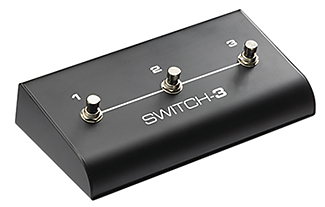 Cutting the Lo-Mid control allowed us to get a great mid scoop setting without loosing the midrange definition. Boosting it gave us fantastic bridge pickup presence, which prompted us to quickly switch over to an MTD Z6 fretless bass for a moment to confirm that bridge pickup fretless growl. The Hi-Mid control operated perfectly from toning down string noise and further scooping the mid range, to delivering that punk rock/hard core pick driven “thwok.” The Treble control was extremely effective, enabling us to dial out most of the highs to get a more vintage sound without loss of definition. By boosting the Treble knob, we were able to add just enough sizzle to cut through with a flurry of slaps and pops.
Cutting the Lo-Mid control allowed us to get a great mid scoop setting without loosing the midrange definition. Boosting it gave us fantastic bridge pickup presence, which prompted us to quickly switch over to an MTD Z6 fretless bass for a moment to confirm that bridge pickup fretless growl. The Hi-Mid control operated perfectly from toning down string noise and further scooping the mid range, to delivering that punk rock/hard core pick driven “thwok.” The Treble control was extremely effective, enabling us to dial out most of the highs to get a more vintage sound without loss of definition. By boosting the Treble knob, we were able to add just enough sizzle to cut through with a flurry of slaps and pops.
For the second method of testing, we adjusted the on-board active EQ on the MTD 635 to our “optimum sound” and then used the BH800 to adjust the sound to deliver our instrument’s specific sound in the room (the room being the greatest variable to your tone if you gig a lot). The BH800 EQ proved extremely useful in our live situations. It allowed us to easily eliminate the muddiness in a crowded bar environment, add some more high end definition and low mid punch on a live outdoor stage, and get the bass to sit better in the mix during an intimate acoustic set.
The next challenge was to see how the BH800 fared with a passive bass. With passive basses, we are more dependent on the EQ of the amp to help us get our tone since passive EQs filter out rather than add. For this run, we used a combination of basses. The first was a Hofner Club bass. The Club bass pickups actually have pretty high output for a passive instrument and have no on-board tone control. With the BH800 EQ flat, the Hofner sounded as stellar as could be on its own. But just when you think it couldn’t get much better, when we boosted the Bass a touch to 2:00, boosted the Low-Mid to 1:00, boosted the Hi-Mid to 2:00 and left the Treble dead center at 12:00, the classic Hofner warmth with the subtle “twok” emanated perfectly. We also used a standard 1979 Fender P-Bass. With almost similar settings but cutting the Hi-Mid to 11:00, we were able to dial in that perfect, mix ready, P-Bass formula.
After multiple experiments with a number of basses in the studio, our brains and ears became retrained. We are so used to the single frequency boost/cut concept that, by instinct you would never turn the Bass EQ knob all the way up or all the way down and expect to get a useable tone. We are not saying that every setting was useful to us, but we had a pretty sick dub tone going on with the Bass up and the Hi-Mid and Treble all the way down. Subsequently boosting the Treble up added definition to the higher strings as opposed to a shrill, unwelcome hiss.
Now for the mystical Tone Print feature… We are given a choice to download two preset effects into the amplifier, which are variations on compression, overdrive, chorus, flanger, octaver and vibrato. Some of the presets are even combinations of the different effects! Once you load the preset, the respective Tone Print knob is the only control you have available to manipulate the preset parameters. For example, when you download a flanger, the single knob may allow you to control the speed via the knob. Another flanger preset may allow you to control the speed and depth at the same time with the single knob. Although you have minimal control over the effect parameters, we found that most of the effects available ranged from being very useable to slightly over the top. As tweakers, we wish an editor was available to really experiment with the effects. However, it was not difficult to find examples of each effect in the library of available presets that did the job nicely. This feature was not only convenient, but provided a low maintenance way to experiment with different types of excellent quality effects.
We hit a bit of a stumbling block that should be noted, particularly with outboard effects that are contingent on the level of input signal. Before engaging effects, it is important to adjust the input gain on the BH800 to get the maximum uncompromised input signal from the instrument. There is no user-controlled input gain adjustability on the effects themselves, and the effects were obviously designed based on an optimum input level. They are also designed to deliver an output level comparable with the unaffected input so there isn’t a severe volume change when switching between the two. We had an issue with a combination compression/overdrive effect. When we were switching basses during testing we must’ve gone from an active to passive bass and never brought up the gain. When we switched from a clean signal to a distortion effect signal, the effected signal was extremely loud compared to the clean. So, practically, if you wanted to switch in the middle of a song from clean to distortion, you would be blowing somebody’s ears out, if not your own. Once we brought up the input gain, the effect output matched the non-effected bass sound, and switching between the clean and distortion sound was flawless.
At 800W for such a small package, there isn’t much this amplifier can’t handle. We did a few club gigs where we brought the BH800 head alone to use with random backline cabinets in venues of every size.
K-210 and K-212 Speaker Cabinets
The K-series bass cabinets are not just accessories to the BH series bass head. These cabinets are an entity all their own. They are tight sounding, rear-ported cabinets with plenty of bass response and high-end clarity. Maybe it’s the fact that TC Electronic is also affiliated with Tannoy (renowned studio monitor speaker manufacturer)—these guys know how to make clean, efficient, speakers. As a combination, the two cabinets together put out a full range of bass tone with no audible limitations based on their configuration. The 210 definition with the 212 bottom is an awesome match for any situation. The 1” ceramic driver in each helps to deliver the bite. Unlike many cabinets that include a tweeter, there is no adjustable crossover, but with plenty of high frequency definition and zero appreciable hiss, we never found ourselves wishing for the means to adjust it. We will attribute the fixed crossover frequency and output level to the excellent design of the speaker cabinets.
The K-210 by itself is enough for small gigs where you need to have bass presence and definition but do not need to fill the room—there is a limit to how much air a 2x10 can push. The K-212 by itself is a different story, though. This cabinet is plenty for a club gig where you need reasonable stage volume but are not expecting to pump bass through the entire club. What we loved about these cabinets as a system is that they offer great sounding variations depending on your application.
The stackable configuration was also a dream in every situation we encountered. It was like an all new experience playing live. The sound men at each gig absolutely loved them as well, because we were actually able to keep the stage volume lower, which made it easier to get a better front-of-house mix.
We also tested the K-series cabinets using some other bass heads to determine just how well they stood on their own. First, we tested with an Aguilar Tone Hammer 500 head. This is a similar class D format head that is highly praised for its versatility and bass tone. The cabinets reproduced the Aguilar tone with ease. We also used an Orange Bass Terror 500 to test out some mildly driven tube essence. The K cabinets fell right into step delivering that warm, vintage feel. The pleasant surprise was the way the tweeter accented some of the tube sparkle.
Documentation and Product Support
The included instructions were not extremely descriptive, but thorough enough to get us through all of the features with relative ease. While it was fairly simple to figure out how to use a smart phone to download the TonePrints, it was somewhat challenging to find the process to load TonePrints via the USB port. Fortunately, the support portal on the TC Electronic website provided us with answers to our questions in less than a day.
Price
The TC Electronic BH800 (MSRP $899) sells for approximately $600. The K210 (MSRP $599) and K212 (MSRP $749) sell for approximately $400 and $450 respectively. These are truly value-priced products for the level of pro audio sound they deliver.
Contact Information
TC Electronic
www.tcelectronic.com
Overall Rating - Product Summary

